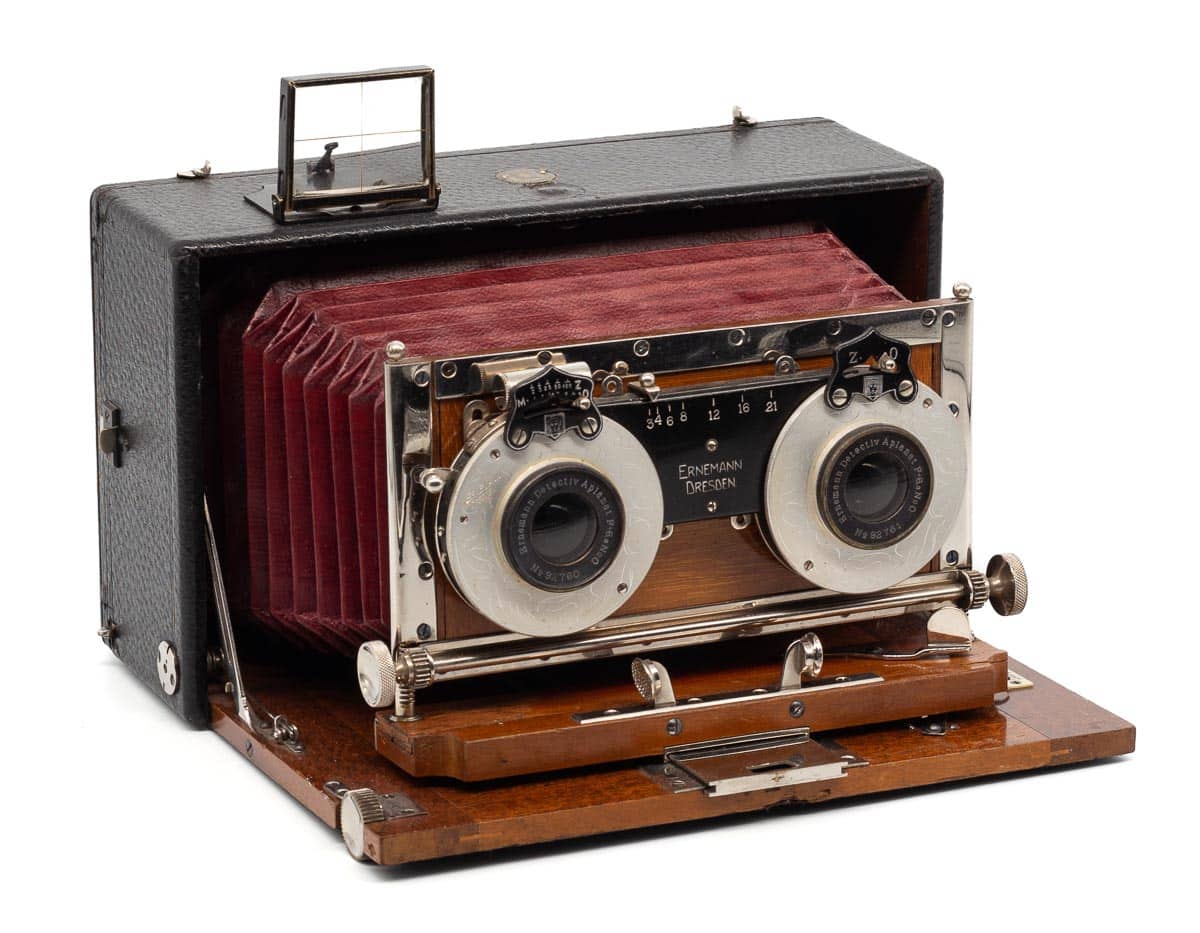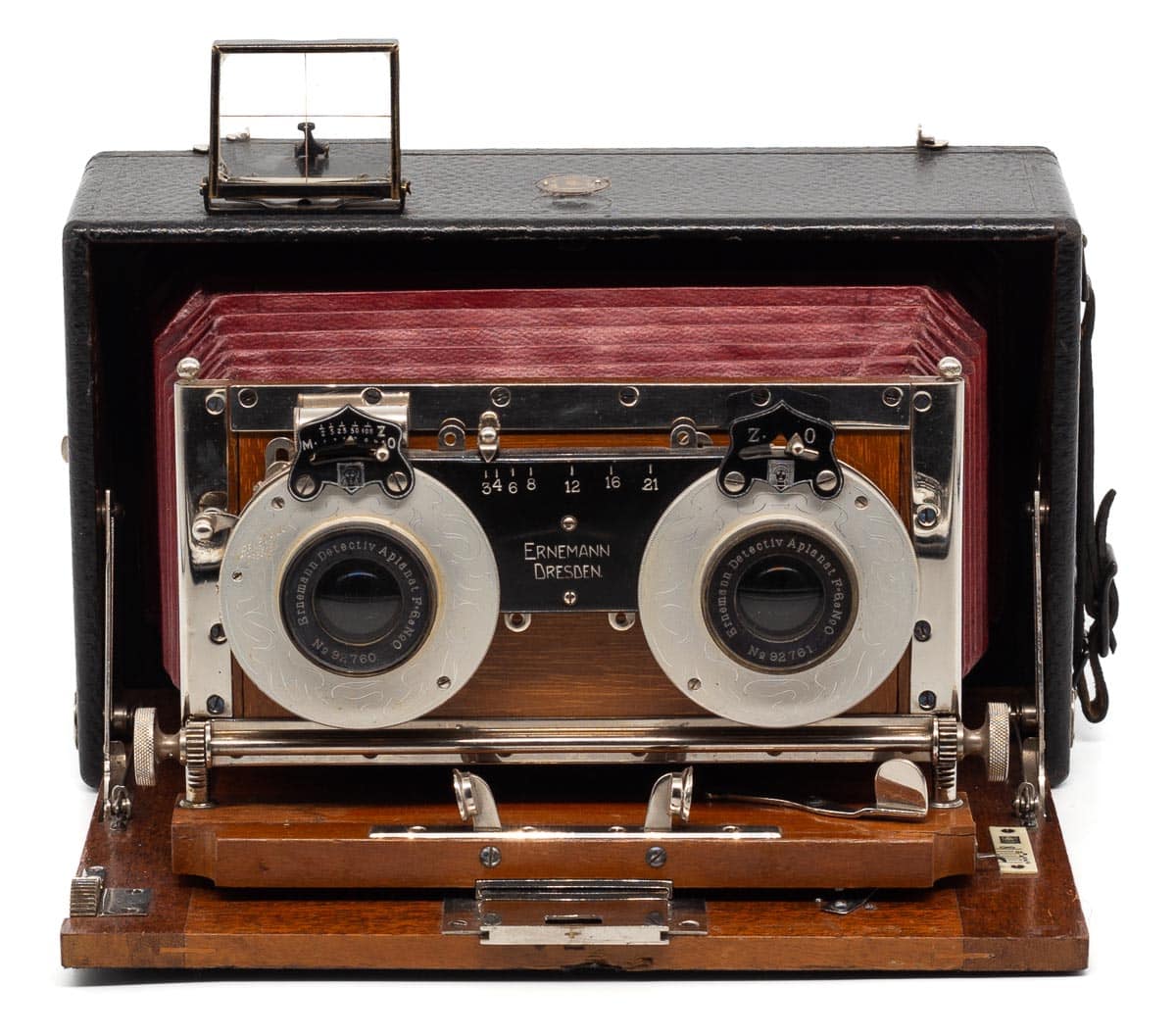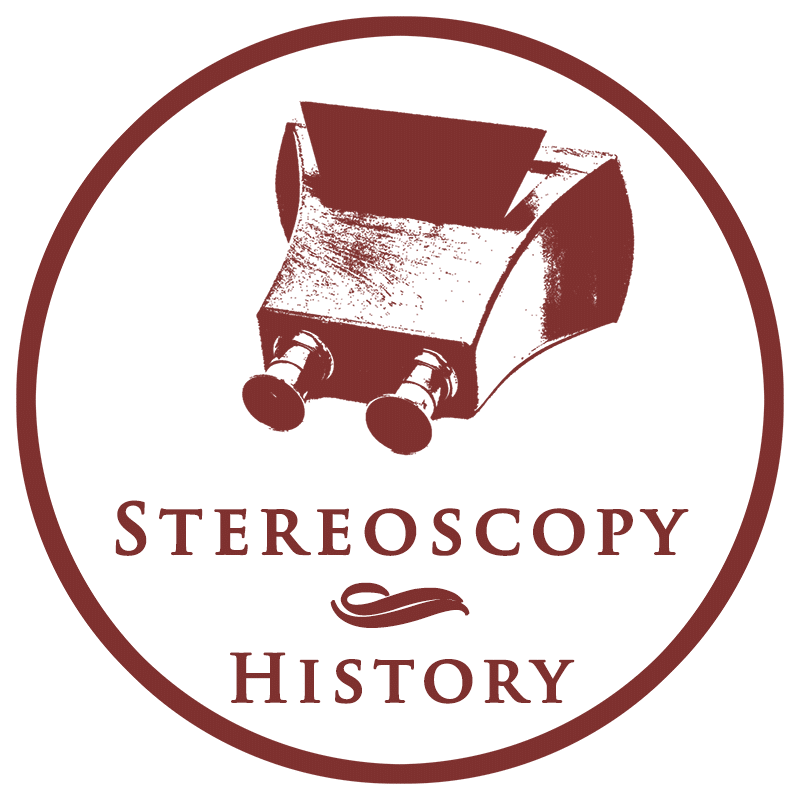
The Heag series of folding cameras were manufactured by Ernemann between 1900 and 1926. The abbreviation Heag stands for Heinrich Ernemann Actien Gesellschaft. Most of the cameras in the Heag series were designed for glass plate negatives. The cameras could be completely folded so they were easy to carry and the lenses and shutter were protected.
The body of the Heag IV is made of wood and covered with black leather. The burgundy-red leather folding covers, wooden baseplate and nickel parts give the camera an attractive appearance. The Ernemann logo with the Goddess of light is visible on top of the body. The lens panel can shift horizontally and vertically to control the image perspective. The camera could also be equipped with a filmpack instead of glass plate negatives.

Specifications
| Manufacturer: | Ernemann, Dresden |
| Year of introduction: | c. 1908 |
| Year of manufacture: | c. 1908–19181 |
| Type: | Stereo camera |
| Serial number: | None |
| Negative type: | Glass |
| Negative format: | 9 x 18 cm |
| Lens: | Two Ernemann Detectiv Aplanat f/6.8 lenses |
| Serial number lens: | 92760 and 92761 |
| Lens aperture: | Settings: 3, 4, 6, 8, 12, 16, 21 |
| Focus: | Yes |
| Shutter: | Five shutter speeds |
| Dimensions (L x W x H): | 22 x 19 x 13 cm (expanded) |
| Construction: | Wood, leather, nickel. |
Glossary: aplanat lens / negative
Ernemann
In 1889, Heinrich Ernemann formed together with Wilhelm Franz Matthias the Dresdner photographische Apparate-Fabrik Ernemann Matthias. Matthias left the company in 1891, and Ernemann continued the business activities alone. From 1899, the company was called Heinrich Ernemann, Aktiengesellschaft für Camerafabrikation in Dresden. The company only produced the wooden parts of a camera, the other parts were supplied by other manufactures. It switched to the production of complete cameras later, and Ernemann became a renowned manufacturer of photographic and film cameras. During the company’s lifecycle it produced a wide range of high-end cameras, but it also manufactured hand-held and tabletop stereoscopes.
The factory was located in the Striesen district of Dresden and was expanded in phases. The original building dated from 1898 and contained the mosaic Lichtgöttin (goddess of light). It was designed by the Art Nouveau painter Hans Unger. It was the famous trademark from 1903 to 1920. The factory was expanded with a central tower after the First World War. The buildings still exist today and the tower is now known as the Ernemann Tower. In 1926, Ernemann merged with ICA, Goerz and Contessa-Nettel to the new Zeiss Ikon company.
References
- Göllner, P. (1995) Ernemann Cameras. p. 195. ↩︎
